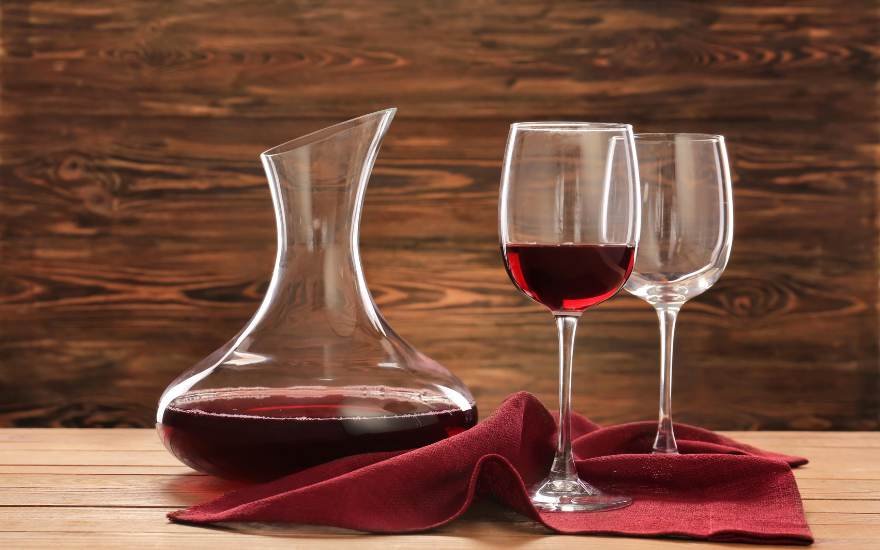Decanting wine might seem like a fancy ritual reserved for sommeliers and posh dinner parties, but there's more to it than just looking impressive. Whether you're a budding wine enthusiast or someone who just enjoys a good glass of red after a long day, understanding why and how to decant wine can make your drinking experience that much better. After all, the painful part is spending money on the bottle – you may as well get the most out of it after that. Plus, it may give you an excuse to whip out that beautiful decanter you’ve been eyeing up!
Why should I decant wine?
In a nutshell, the main reason for decanting wine is to enhance its flavour and aroma, making your sipping experience more enjoyable. By transferring the wine from its bottle to a decanter, you’re allowing it to breathe, which means it gets exposed to oxygen. This exposure softens harsh tannins, particularly in younger reds, and helps to release the wine's bouquet—think of it as letting the wine stretch its legs after being cooped up in a bottle for years.
The same thought process can also be applied to pieces from a broken cork, so this is a handy way to save wines cursed by this.
Additionally, decanting can help separate the wine from any sediment that might have formed, especially in older vintages, ensuring you don’t get a gritty surprise in your glass.
When should I decant wine?
Not every wine demands the same decanting treatment. Generally, bold red wines like Malbec, Cabernet Sauvignon, Syrah, and Bordeaux benefit the most from a good dose of oxygen. These wines are often tannic and structured, so giving them some time in a decanter can work wonders in softening their edges.
However, it’s not just about the big reds. Some white wines, particularly those with complex structures like Chardonnay, can also benefit from a quick decant. It’s less common but can make the flavours more expressive. Just don’t overdo it; whites are more delicate and can lose their freshness if left exposed for too long. And not just whites, but all wines deteriorate once excessively oxidized.
On the other hand, there are times when you should avoid decanting. Delicate, older wines—especially ones over 15-20 years—might fall apart quickly once exposed to air. If you do decant these, it’s best to do so gently and serve them soon after to enjoy the fleeting but magical moment they offer.
There may be the rare occasion when you wish to evaporate away the pungent aroma of a sparkling wine and a gentle decant can soften aggressive bubbles, but as a rule we suggest avoiding it because it’s not that beneficial, and you run the risk of killing off all the bubbles.
How to decant wine?
Decanting wine is simpler than it sounds, but it isn’t as simple as uncorking and allowing a small amount of air to flow into the bottle. First, stand the bottle upright for a few hours before you plan to decant, especially if it’s old, to allow the sediment to settle at the bottom. Then, slowly pour the wine into the decanter in a steady, slow stream, aiming to avoid disturbing the sediment - you want this to remain at the bottom.
If you’re feeling particularly cautious, you can use a light source, like a candle, under the neck of the bottle to see when the sediment is getting close to the mouth. You might not want to waste a drop, but leaving a tiny bit of liquid in the bottle is essential for leaving sediment behind. Once the wine is in the decanter, let it sit for the desired time—or dive straight in if you’re impatient!
Do I need to buy something to decant wine?
If you’ve got an interest in wine gadgets, you’ll have seen decanters in various forms because they certainly draw the eye; swan, duck, cornett and standard are all common shapes. If you want to get specific about it, you can adapt your decanter to the wine. For example, a fuller-bodied red needs lots of oxygen contact, but a lighter one only requires a smaller decanter. You could also just adapt this by increasing and decreasing the time exposed to air though.
Another option is the aerator, which attaches to the end of a wine bottle and allows you to pour wine directly into a glass while introducing air into the wine. These can be very small and vary a lot in how they work and the effect they have on your wine.
If you always thought decanting was just for show, then now you know! Next time you uncork a juicy red why not give it a whirl? If you want to know how your glass can affect the liquid, try this guide!


